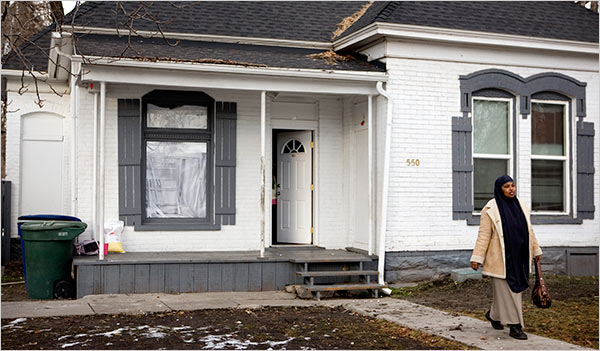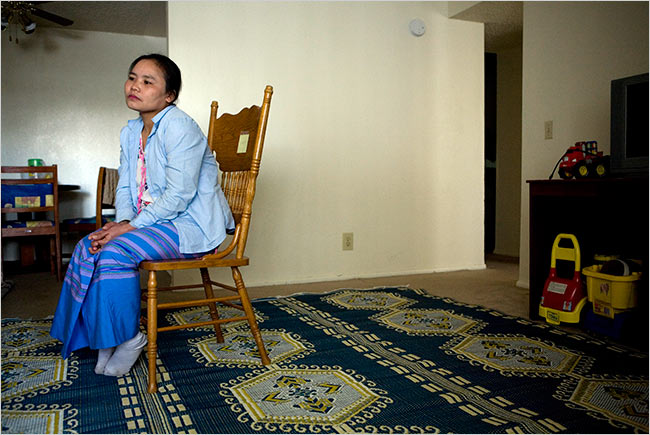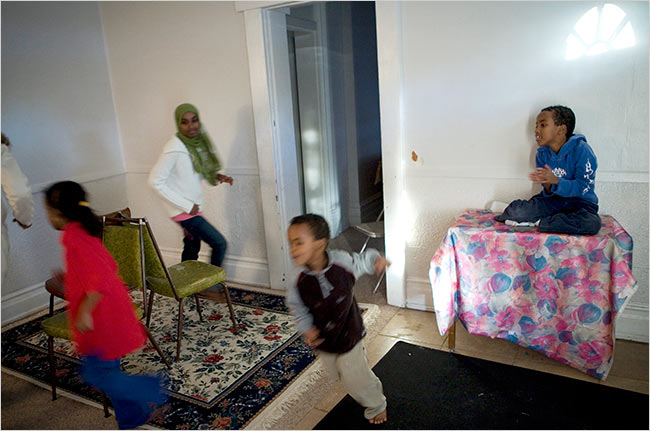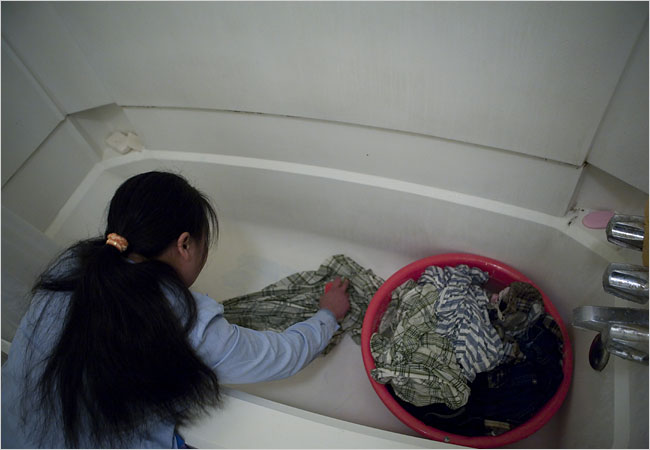| Want to send this page or a link to a friend? Click on mail at the top of this window. |
More Special Reports |
| Posted January 30, 2009 |
| National |
| For Refugees, Recession |
| Makes Hard Times Even Harder |
 |
| PHOTOGRAPHS RAMIN RAHIMIAN FOR THE NEW YORK TIMES |
| Lul Omar, a refugee from Somalia, commutes an hour each way to her job at a Mormon thrift shop, where she makes $6 an hour. |
| By ERIK ECKHOLM |
|
|
|
 |
|
| Nyaw Paw spent 27 years in a Thai refugee camp before arriving in Salt Lake City last August with her two sons, 6 and 13. | |
|
|
|
|
|
 |
|
| Ms. Omar and her seven children, ages 4 and 15, arrived in Salt Lake City in October 2007. Paying rent is her biggest problem. | |
|
|
|
|
|
 |
|
| Nyaw Paw, 33, a Burmese refugee living in Utah, washes clothes in the bathtub to save money. | |
|
|
| Wehaitians.com, the scholarly journal of democracy and human rights |
| More from wehaitians.com |